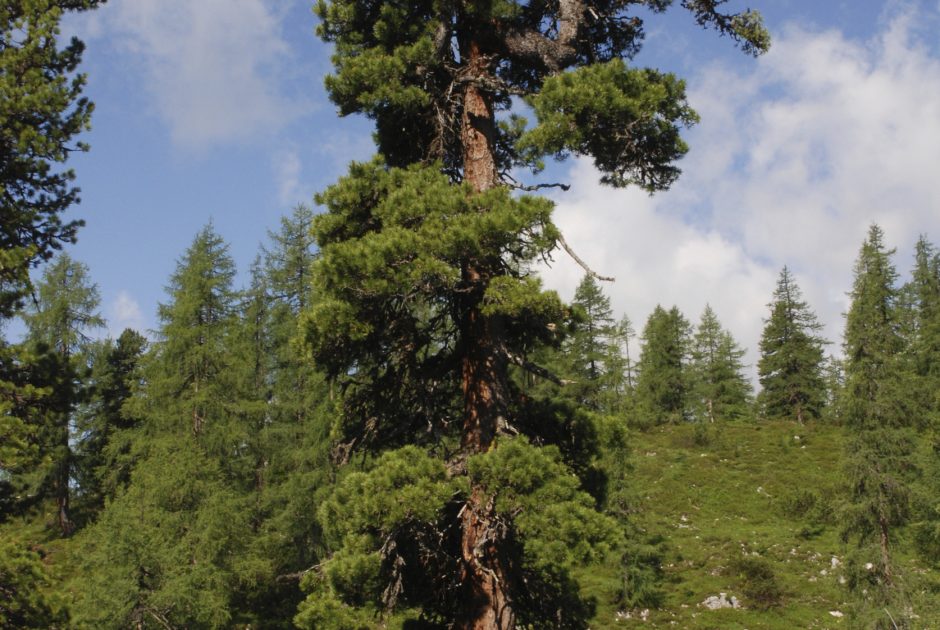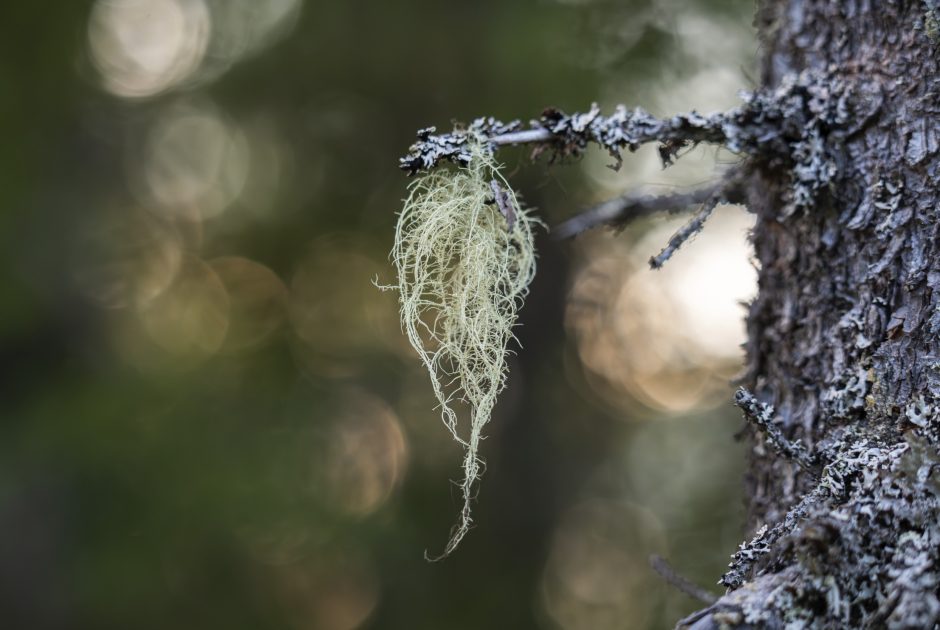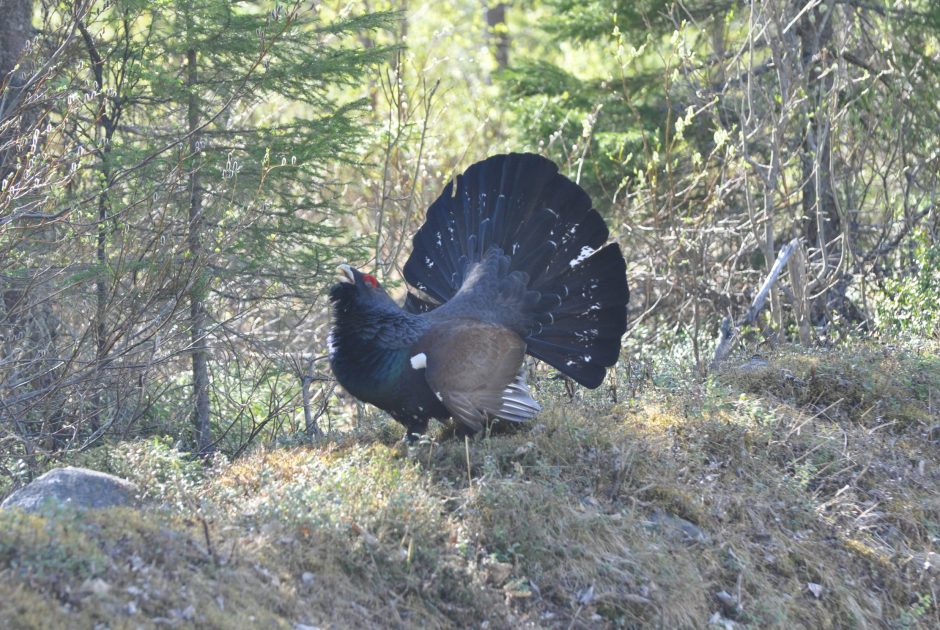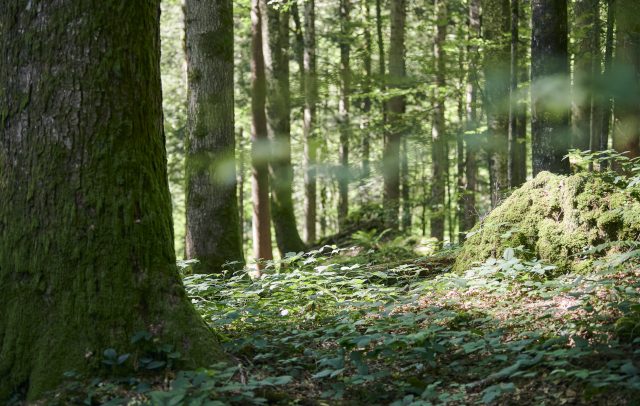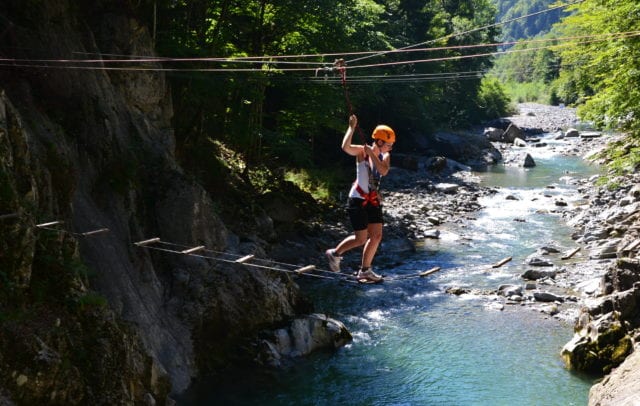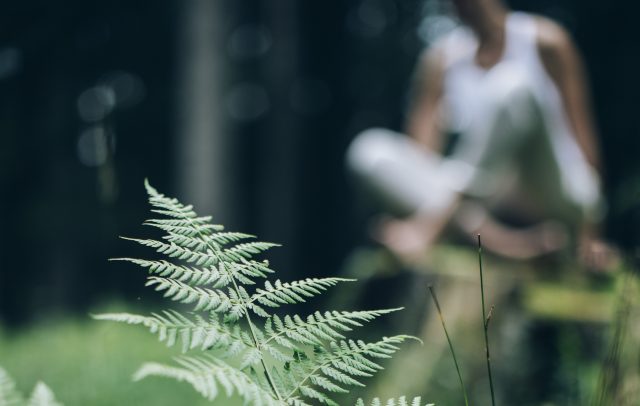
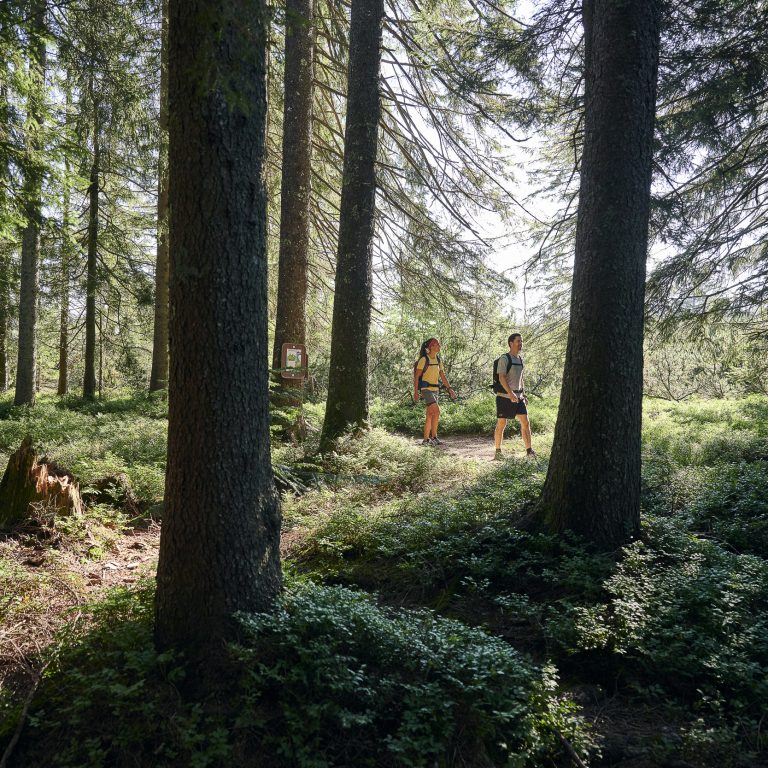
C Hiking through Bregenzerwald’s forest landscapes (c) Alex Kaiser - Bregenzerwald Tourismus
Nature tips Vorarlberg
Forest landscapes
Forests not only provide habitats for countless organisms but also resources for humans.
Vorarlberg is renowned for its impressive forest habitats. After all, one-third of the region is covered in woodland. A forest ecosystem is typically a complex community of organisms, distinguished by its unique vitality, stability, and diversity, all of which continuously undergo adaptation. It represents an interplay of soil, water, climate, location, and terrain, as well as numerous plant and animal species and microorganisms that create a “web of life.” These forests are not only home to familiar animals like red and roe deer, and foxes, but also to rare and protected species such as the Alpine Longhorn Beetle and the Capercaillie.
The forest landscape of Vorarlberg is extremely diverse and encompasses various types of woodlands. Many areas in Vorarlberg are characterised by a balanced mixed forest. In lower, sunny locations, beech mixed forests primarily dominate. In higher elevations, conifers such as spruce and silver fir are the main species found. In the valleys, Vorarlberg was once characterised by extensive floodplain forests. Nowadays, only isolated remnants of these ecologically valuable and highly dynamic floodplain ecosystems can be found along the rivers of Vorarlberg. A unique feature of the forest habitats in Vorarlberg is the “plenter forests,” which are predominantly found in the Lower Bregenzerwald. These sustainably managed forest structures provide an important habitat for numerous animal and plant species.
In terms of naturalness,
we examined 5,000 forests.
The best region of all
extends from the Arlberg to the Pfänder.
The complex network of trees, shrubs, plants, and animals creates a stable ecosystem that serves numerous functions. Forests not only provide habitats for countless organisms but also resources for humans. They help regulate the climate, protect against erosion and avalanches, and serve as important water reservoirs. At the same time, they are a valuable place for recreation for those living in or visiting the Vorarlberg region. Forest educational trails, nature reserves, and a variety of hiking paths invite visitors to experience the beauty and mystery of the woods.
Nature tips in the forest habitat
-
01 Great Spotted Woodpecker – Knock, knock. Who’s there?
In the numerous forests and parks of Vorarlberg, it’s worth paying close attention. For instance, when the Great Spotted Woodpecker is nearby, it usually announces its presence with a variety of vocalisations. Be it the loud begging calls of chicks in the nesting cavity or the rhythmic drumming on trees in spring to attract a mate, with some luck and a good pair of binoculars, these birds can be spotted throughout the year. Visually, Great Spotted Woodpeckers are distinguished by their striking plumage, most notable the red underside of their tails. In addition to the extraordinarily wide range of habitats, female woodpeckers surprise us with another fact: some of them manage to avoid their husbands and usually raise a second brood with a younger male. In biology, this phenomenon is known as polyandry (having multiple male partners).
-
02 Stone Pine - The queen of the Alps
The Stone Pine, also known as the Arolla Pine, is a fascinating conifer native to the high Alpine regions of the Alps. It can grow up to 25 metres tall, with its needles giving the tree a dense, green appearance. What makes the Stone Pine particularly special is its versatile use. Its exceptionally dense and durable wood is popular in furniture making and interior design. The tree’s aromatic scent, primarily due to terpenes, has been proven to reduce stress and improve sleep. Additionally, the small, tasty seeds found in its cones are used in cooking. The Stone Pine also plays a crucial role in Alpine ecosystems by preventing soil erosion, providing habitat for numerous animal species, and helping to regulate water balance in mountainous areas.
Protection and conservation: Climate change and human impacts on Alpine ecosystems pose significant challenges for the Stone Pine. Due to its slow growth in its early years, it is particularly vulnerable to snow mould infestation. Additionally, it is highly susceptible to crown breakage from wet snow, as well as browsing and bark stripping damage from wildlife.
Tip for experiencing: In Vorarlberg, the Stone Pine is less common compared to other federal states. It primarily grows around the Arlberg and Montafon regions, at altitudes reaching up to 2,200 metres.
-
03 Witch’s-Hair Lichen - When trees have a beard
When winter sets in and the forests become bare, an otherwise unnoticed phenomenon comes to light during walks. Some towering trees in Vorarlberg appear to be wearing a beard. What may at first glance appear to be a disease is actually Witch’s-Hair Lichen, which play a vital role in the ecosystem. These ‘tree beards’ truly live a dual existence. A portion of these lichens is composed of fungi, while the other part consists of algae. This partnership allows them to live relatively independently of the tree, without depriving it of nutrients or water. The algae contribute by producing essential sugar compounds through photosynthesis, while the fungi handle the absorption of nutrients and water from the air.
Protection and conservation: This unique function makes Witch’s-Hair Lichens valuable indicators of air quality, as they can only thrive in areas with clean air. Ecologists therefore use them to gauge pollution levels. Unfortunately, many species are listed as endangered on the Red Lists of Central Europe, highlighting their vulnerability.
Tip for experiencing: To spot genuine Witch’s-Hair Lichen in Vorarlberg, look for them on coniferous trees near rivers.
-
04 Capercaillie - Forest dancer
Proud and majestic, the Capercaillie (Tetrao urogallus) stands as a symbol of the forests and mountainous regions. It is the largest grouse in Europe and a master of camouflage. With its impressive plumage, it blends seamlessly into its woodland surroundings. With their splendid decorative feathers and an impressive courtship display during the mating season, male Capercaillies (called cocks) are truly captivating. Anyone lucky enough to witness this spectacle will not soon forget.
Protection and conservation: Protecting the Capercaillie requires preserving its natural habitats. Effective measures include establishing conservation areas, promoting sustainable forestry practices, and minimising human disturbances during breeding and rearing periods. It is particularly important to avoid early morning and evening outings during late winter and spring when ski touring or snowshoe hiking, as these times are critical for the birds.
Tip for experiencing: If you are fortunate enough to encounter a Capercaillie, always maintain a respectful distance to avoid disturbing the bird. For a closer look, a visit to the Wildpark Feldkirch offers a chance to see these magnificent creatures up close.





















